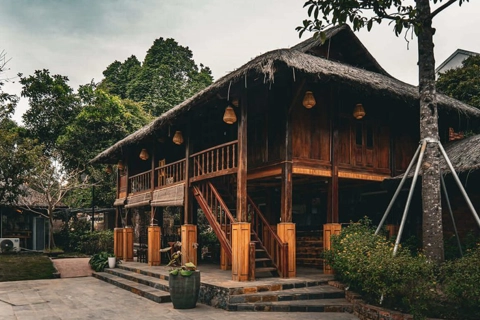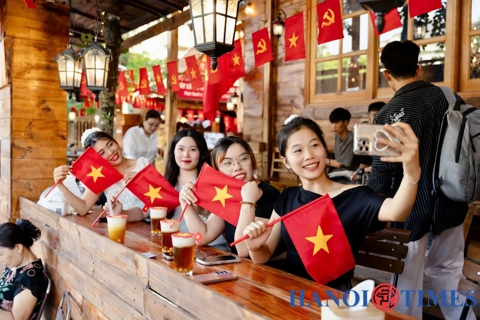Travel
Hanoi, Ho Chi Minh City named in MasterCard’s top 20 Asia Pacific destinations
Sep 14, 2019 / 02:04 PM
Hanoi ranked 15th and Ho Chi Minh City at 18th out of 161 cities all over the world, with overnight international arrivals of 4.8 million and 4.1 million, and average spend per day of US$78 and US$98, respectively.
Hanoi and Ho Chi Minh City have been named among top 20 Asia Pacific destinations for international travelers, according to Mastercard’s Asia Pacific Destinations Index (APDI), a regional subset of the Global Destination Cities Index (GDCI).
According to the list, Hanoi ranked 15th and Ho Chi Minh City at 18th out of 161 cities all over the world, with overnight international arrivals of 4.8 million and 4.1 million, and average spend per day of US$78 and US$98, respectively.
The report revealed Asia Pacific’s five most popular destinations for international travelers – Bangkok, Singapore, Kuala Lumpur, Tokyo and Seoul – welcomed over one-fifth, or 22%, of all overnight visitors to the region’s top 161 cities and regional centers in 2018.
In 2018, Asia Pacific hosted travelers making 342.2 million business and leisure trips, up from 159.1 million in 2009, representing an 8.9% compound annual growth rate (CAGR) over the nine year period. During the same period, travel spending in Asia Pacific more than doubled, rising from US$117.6 billion to US$281.1 billion, equating to a compound annual growth rate of 10.2%.
Backed by a decade of destination insights, Mastercard’s 2019 APDI highlights four key trends that are shaping the future of travel in the Asia Pacific region.
With the top 20 cities attracting nearly half (49.8%) of all international overnight arrivals to the 161 destinations ranked in the APDI, it is important to understand not only how continuously rising travel numbers impact cities and destinations for the better, but also the challenges they pose. This equips governments, merchants and the global travel industry with the information and insights they need to better serve their residents and visitors,” said Rupert Naylor, senior vice president, Data & Services, Asia Pacific, Mastercard.
Mainland China continues to exert the greatest influence over travel patterns and expenditure flows. Since 2009, overnight arrivals by mainland Chinese travelers in markets across Asia Pacific surged from 10.5 million to 62.4 million in 2018, representing a 21.9% compound annual growth rate over the period. Notably, mainland China is amongst the top three source markets of outbound travelers for 82 cities in Asia Pacific, or more than half of the 161 destinations in the APDI.
Japan is now the hottest destination in Asia. For the second year in a row, Japan is the only market in the APDI to command 25% of Asia Pacific’s top 20 destinations, with Okinawa nudging out Kyoto to join the list for the first time, alongside Tokyo, Osaka, Hokkaido and Chiba. Okinawa, Japan’s tropical paradise, is one of the region’s fastest-growing destinations, skyrocketing 109 places since 2009.
Vacation destinations prevail over the fastest rising cities. While Japanese cultural centers top the list of the 10 fastest rising cities, the bustling industrial hub of Ludhiana in India’s northern state of Punjab claims the number 2 spot, having jumped 78 places in the index since 2009.
While many Asia Pacific destinations are basking in the growth led by mainland Chinese travelers, South Korea and Japan are also noteworthy as the next biggest Asian origin markets fueling rising travel expenditure and overnight arrivals across the region. Top contributor mainland China accounts for 18.2% of international overnight arrivals within the region, while South Korea contributes 9.1% and Japan makes up 6%.

Source: MasterCard.
|
The report revealed Asia Pacific’s five most popular destinations for international travelers – Bangkok, Singapore, Kuala Lumpur, Tokyo and Seoul – welcomed over one-fifth, or 22%, of all overnight visitors to the region’s top 161 cities and regional centers in 2018.
In 2018, Asia Pacific hosted travelers making 342.2 million business and leisure trips, up from 159.1 million in 2009, representing an 8.9% compound annual growth rate (CAGR) over the nine year period. During the same period, travel spending in Asia Pacific more than doubled, rising from US$117.6 billion to US$281.1 billion, equating to a compound annual growth rate of 10.2%.
Backed by a decade of destination insights, Mastercard’s 2019 APDI highlights four key trends that are shaping the future of travel in the Asia Pacific region.
With the top 20 cities attracting nearly half (49.8%) of all international overnight arrivals to the 161 destinations ranked in the APDI, it is important to understand not only how continuously rising travel numbers impact cities and destinations for the better, but also the challenges they pose. This equips governments, merchants and the global travel industry with the information and insights they need to better serve their residents and visitors,” said Rupert Naylor, senior vice president, Data & Services, Asia Pacific, Mastercard.
Mainland China continues to exert the greatest influence over travel patterns and expenditure flows. Since 2009, overnight arrivals by mainland Chinese travelers in markets across Asia Pacific surged from 10.5 million to 62.4 million in 2018, representing a 21.9% compound annual growth rate over the period. Notably, mainland China is amongst the top three source markets of outbound travelers for 82 cities in Asia Pacific, or more than half of the 161 destinations in the APDI.
Japan is now the hottest destination in Asia. For the second year in a row, Japan is the only market in the APDI to command 25% of Asia Pacific’s top 20 destinations, with Okinawa nudging out Kyoto to join the list for the first time, alongside Tokyo, Osaka, Hokkaido and Chiba. Okinawa, Japan’s tropical paradise, is one of the region’s fastest-growing destinations, skyrocketing 109 places since 2009.
Vacation destinations prevail over the fastest rising cities. While Japanese cultural centers top the list of the 10 fastest rising cities, the bustling industrial hub of Ludhiana in India’s northern state of Punjab claims the number 2 spot, having jumped 78 places in the index since 2009.
While many Asia Pacific destinations are basking in the growth led by mainland Chinese travelers, South Korea and Japan are also noteworthy as the next biggest Asian origin markets fueling rising travel expenditure and overnight arrivals across the region. Top contributor mainland China accounts for 18.2% of international overnight arrivals within the region, while South Korea contributes 9.1% and Japan makes up 6%.








